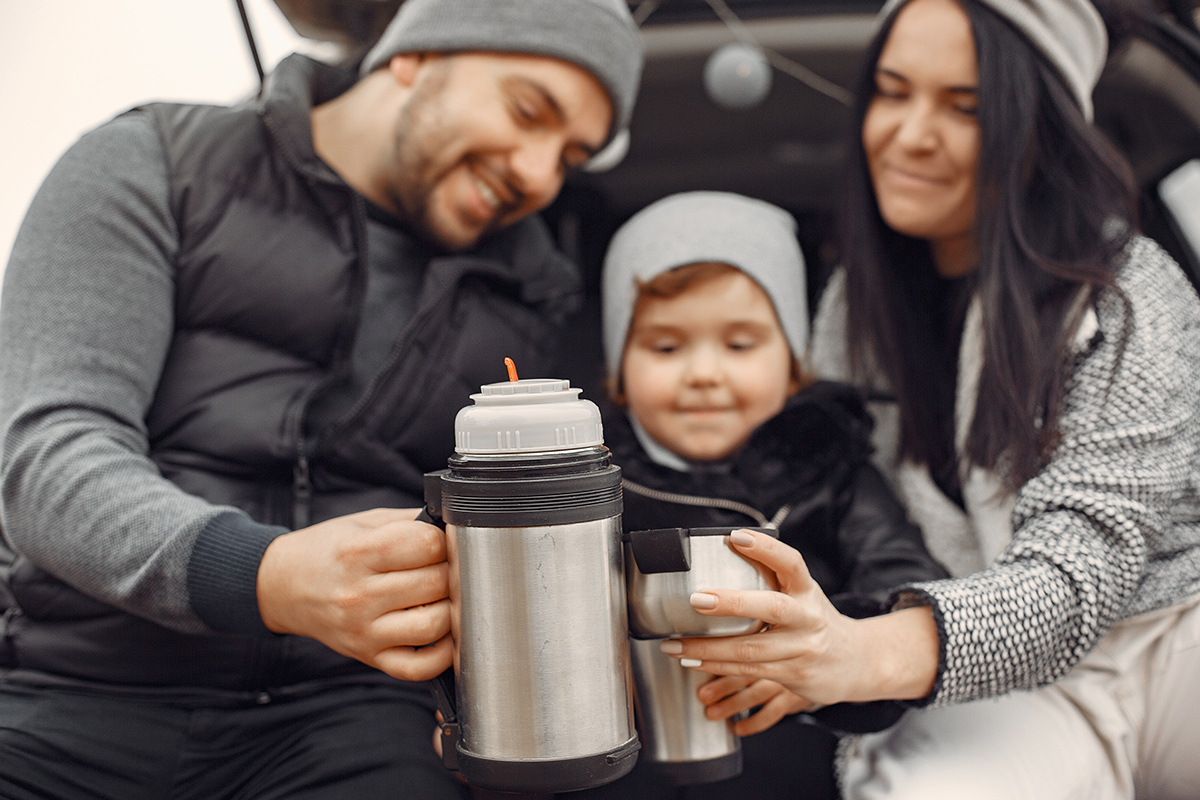Thermoses or thermo mugs help to keep drinks or food warm for a long time, such as hot tea on a cold winter day or refreshing lemonade in summer. However, not all thermoses and thermo mugs are the same. In this article, let’s understand what to pay attention to in order to choose a really reliable and durable product.
The material of the body and the inner layer
For a thermos, like a thermo mug, the material of the body and the inner layer is extremely important.
The outer layer of the product
The outer shell is usually made of plastic or metal. Plastic models are lighter and cheaper, but less durable. They can lose their shape over time, especially if handled carelessly. Metal thermoses and thermo mugs, on the contrary, are more durable and resistant to external damage. They better protect the contents from temperature changes, so they are ideal for long journeys.
Inner material
The inner layer of thermoses is usually glass or metal. Glass flasks retain heat well and do not absorb odours, but they are fragile and require careful handling. Metal flasks, most often made of stainless steel, are much more resistant to mechanical damage. Stainless steel does not rust, is easy to clean and retains the temperature of drinks for a long time.
Temperature retention time in a cup and thermos
The choice of thermos or thermo mug depends on how long the temperature is maintained. Quality thermoses can keep drinks hot or cold for 12 to 24 hours. In thermo mugs, which have a smaller volume and compact size, this period is usually shorter – from 4 to 8 hours.
Products with hermetically sealed lids
It is important to understand that the time of temperature preservation depends not only on the design of the thermos, but also on the conditions of its use. If the thermos is often opened, the drink inside cools down faster. Therefore, when choosing, it is worth paying attention to models with airtight lids that prevent heat leakage.
Thermoses for food and for drinks
It is also worth considering that thermoses for drinks and thermoses for food can differ. Food models have a wider neck and are often used for soups or other hot meals, their insulating properties also vary depending on the manufacturer and design.
Lid type and usability
The type of lid greatly affects the usability of a thermos or thermos mug. There are several common options.
Screw-on lids
This is the simplest and most reliable type of lid that guarantees an airtight seal. However, in order to pour a drink, you have to unscrew the lid completely every time, which is not always convenient.
Push-button lids
Allows you to pour a drink by pressing a button. This is a convenient option for thermal mugs that can be used on the move, such as in the car or on a walk. Button lids are usually leak-proof, but require more care as the mechanism can become dirty over time.
Lids with a valve
Often found on beverage thermoses. They are convenient for pouring hot liquids, preventing them from spilling. However, these lids require careful handling to prevent the valve from clogging.
Volume and compactness of thermos and thermo mugs
The volume of products can vary from 300 ml to 2 litres and more. The choice depends on the purpose for which they are needed.
For travelling and everyday use
For long trips or hikes, thermoses with a volume of 1-1.5 litres are suitable, which allow you to take more hot drinks with you. For everyday use in the city or at work, it is better to choose compact thermo mugs with a volume of 300-500 ml, which easily fit into a bag or backpack.
Compact models
Compactness is an important aspect for those who spend a lot of time on the road. Small thermo mugs are convenient for use in the car or on public transport. However, it is important to remember that the larger the volume, the longer the thermos or thermo mug retains heat. If maximum temperature retention time is important, you should choose a model with a large volume and good thermal insulation.
When choosing a thermos or thermo mug, it is important to consider many factors: material, temperature retention time, type of lid and volume. By paying attention to these criteria, you will be able to choose the ideal model that will be a reliable companion in any conditions.



